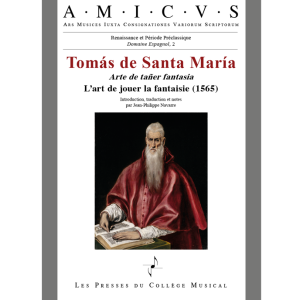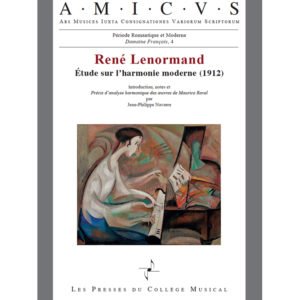Description
Un traité complet de l’orgue
Sous la forme très goûtée du dialogue, l’organiste et moine franciscain Girolamo Diruta rédige la première méthode d’orgue italienne, Il Transilvano. Dans la première partie, publiée en 1593, il aborde les points techniques primordiaux de l’exécution sur cet instrument. Par exemple les doigtés, la position de la main, les ornements, le rôle dans la liturgie. Il précise ensuite des éléments plus esthétiques et stylistiques. Enfin, il complète ce parcours par un choix d’œuvres où, à côté de ses propres compositions, figurent celles des grands maîtres de l’époque : Andrea et Giovanni Gabrieli, Luzzasco Luzzaschi, Claudio Merulo, etc.
Dans la deuxième partie, publiée en 1609, Diruta traite de sujets relatifs à l’improvisation et à la composition. C’est pourquoi il expose clairement les règles du contrepoint et la théorie modale de son temps, avec de nombreux exemples. Puis il explique brièvement la relation entre la registration et l’expression de chaque mode.
Cette somme organistique eut un grand retentissement en son temps et fut regravée plusieurs fois du vivant de l’auteur.
A complete method for playing the organ
This great treatise on the organ playing by the franciscan monk Girolamo Diruta was the first published in Italy, under the title of Il Transilvano. In the first part, all the features of organ playing are discussed : position of the body, of the hand, fingering, ornaments, etc. The book contains also many lightening on aesthetics and style. Then, Diruta completed his dialogue with a choice of pieces, in all genres of music, where, along of his own pieces, Diruta offers works by the prominents masters of his time : Andrea and Giovanni Gabrieli, Luzzasco Luzzaschi, Claudio Merulo and others.
In the second part, published in 1609, he talk about improvisation and compostion. Therefore, he gave the rules of counterpoint and exposes the modal theory of his time, with many examples. After that, he explains how to register in accordance with the mood of each mode.
These important books on the organ encountered a big success and were engraved several times during Diruta’s life.






